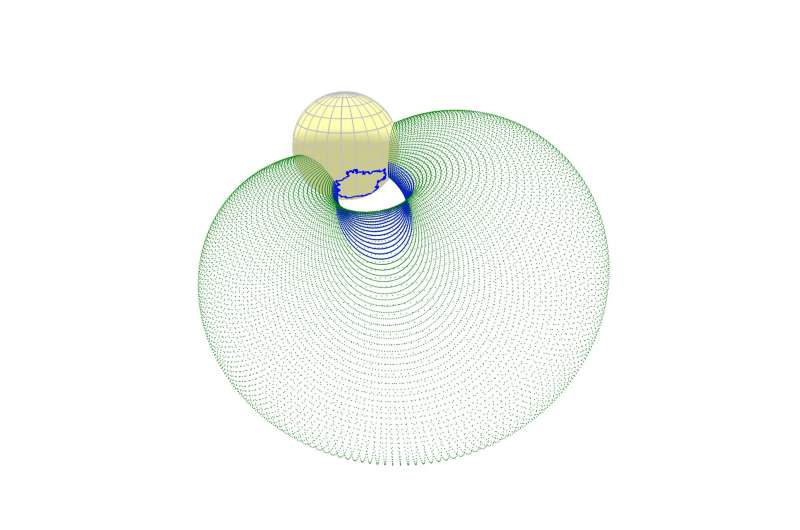This article has been reviewed according to Science X's editorial process and policies. Editors have highlighted the following attributes while ensuring the content's credibility:
fact-checked
peer-reviewed publication
trusted source
proofread
New findings facilitate solar storm forecasting based on dimming of sun's corona

Researchers have developed new methods for using coronal dimmings observed in the solar corona for early diagnosis of powerful bursts of plasma from the sun.
Their findings can help us better understand and predict extreme space weather events that directly impact many industries and technological systems in space and on Earth: satellites, airlines, power grids, communications, transportation, pipelines, emergency services. The results of their study are published in the Astronomy & Astrophysics journal.
The sun not only generously provide us with light and heat, but it is also the source of space weather effects. Solar flares, prominences, and eruptions of giant magnetic plasma bubbles can cause geomagnetic storms and ignite auroras. On Oct. 28, 2021, the sun unleashed a powerful solar flare, followed by a prominence eruption and an Earth-directed coronal mass ejection.
Unfortunately, it is impossible to detect a plasma cloud at an early stage in its development. Usually it can be identified at an already developed stage, when it appears in the field of view of special coronagraphs that create an artificial solar eclipse but occult the solar disk by several of its radii.
The team approached a solution to this problem from another angle and studied the direct traces of coronal mass ejections on the sun—coronal dimmings, which are dark spots seen in extreme ultraviolet in the solar corona. The appearance of dimmings reflects the loss of matter in the corona during plasma ejection.
"We are taking a closer look at the sun to prove that coronal dimmings not only indicate the onset of an eruptive event, but can also help estimate whether it will be directed toward Earth. It's remarkable that we can do this with dimmings at a very early stage, even before coronographs can detect a plasma bubble," says Skoltech Ph.D. student and the leading author of the study, Galina Chikunova.
The team developed a set of advanced image processing techniques using data from satellites during the golden era of space observations: Solar Orbiter, STEREO-A, SDO, and SOHO, which observe our sun from various vantage points in the heliosphere. For the Oct. 28, 2021, case study, the scientists introduced a new method for deriving the dominant direction of dimming development and performed 3D reconstructions of the low-lying eruptive filament, as well as 3D modeling of the fully developed magnetic bubble. This approach enabled the first investigation of the relationship between the direction of a dimming, the trajectory of the filament eruption, and the motion of the plasma bubble in three-dimensional space.
"It is absolutely fabulous that at the early stages of solar storm development, two-dimensional images of coronal dimmings can indicate in which direction a prominence and a plasma bubble would travel in three-dimensional space," study co-author, Skoltech Associate Professor Tatiana Podladchikova says.
Currently, the authors are further developing their methods to use the unique potential of coronal dimmings for the early diagnostics of coronal mass ejections, their speed, and recovery of the solar corona after eruption, which is of great importance for a deeper understanding of the physics of the sun and space weather forecasting.
The study was carried out by scientists from the Skolkovo Institute of Science and Technology, together with colleagues from NorthWest Research Associates, the University of Graz and the Kanzelhöhe Observatory, and the Hvar Observatory.
More information: G. Chikunova et al, Three-dimensional relation between coronal dimming, filament eruption, and CME. A case study of the 28 October 2021 X1.0 event, Astronomy & Astrophysics (2023). DOI: 10.1051/0004-6361/202347011. On arXiv: DOI: 10.48550/arxiv.2308.09815
Journal information: Astronomy & Astrophysics , arXiv
Provided by Skolkovo Institute of Science and Technology





















